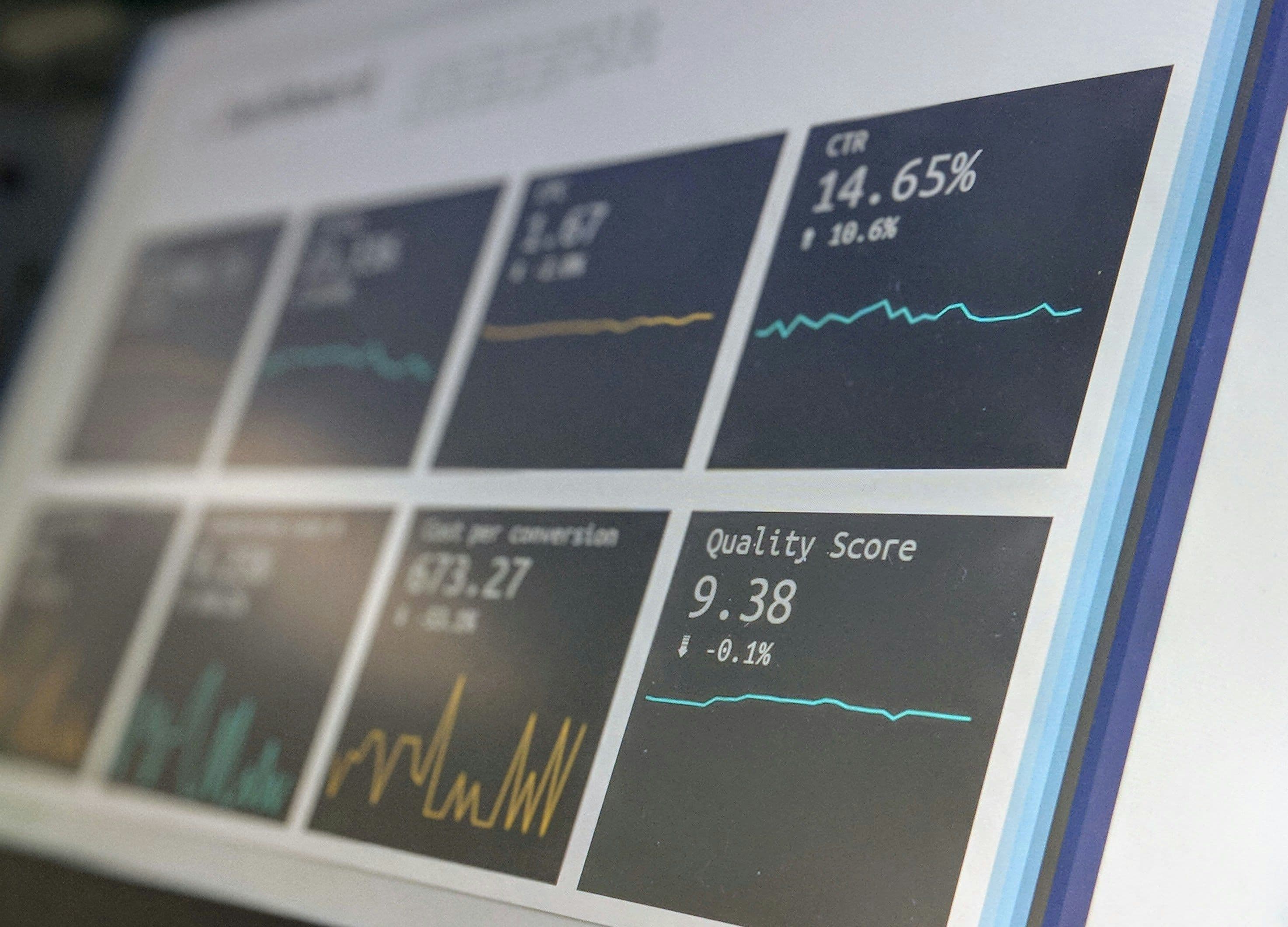Finding Your Target Audience: Research & Validation Methods
Target audience research using real search data, not surveys. Learn Maya's method that revealed 65% of one client's audience was completely wrong.

Oh wow. That's literally what I said out loud when I saw the search data that completely flipped everything I thought I knew about audience research.
So here's what happened: I had this client, a B2B software company, absolutely convinced their target audience was millennials working at tech startups. It made perfect sense, right? They are young, tech-savvy, and always looking for the latest tools to make their jobs easier.
They'd done all the traditional research. We conduct surveys, customer interviews, and focus groups. Every single piece of feedback confirmed what they already believed: their ideal customers were twenty-something developers and product managers at fast-growing startups.
But when I really dug deep into their search data to find out who was actually searching for their solution, I nearly fell off my chair. Sixty-five percent of their actual searchers were Gen X small business owners. Tech companies are not the focus here. There are traditional businesses such as accounting firms, law offices, and manufacturing companies.
There were people in their forties and fifties who had been running businesses for decades, searching for solutions to problems they'd been dealing with for years. These weren't the hip millennials my client had been picturing in their target audience fantasies.
That moment completely changed how I think about audience research. Surveys tell you what people think they want. Focus groups tell you what people think they should say. But search data? Search data shows you what people actually do when they think nobody's watching.
Now I help entrepreneurs find their real audience, not the imaginary one they've convinced themselves exists.
Why Most Audience Research is Just Expensive Guessing
Here's the brutal truth that took me way too long to figure out: most audience research is based on what people say, not what they actually do. And there's a massive difference between the two.
When I first started my consultancy, I was absolutely certain my ideal clients were small business owners with 10-50 employees who needed help with local SEO. Made total sense in my head. Small businesses, local search, perfect match.
I spent months creating content for this imaginary audience. "Local SEO for small businesses." "How small business owners can improve their Google rankings." All that stuff.
Reality check: my actual clients turned out to be enterprise companies with hundreds of employees who needed technical SEO audits. Not small local businesses at all. My real audience was nothing like what I'd assumed.
Here's what I've learned after 12 years of doing this: search behavior doesn't lie. When people are alone at their computer at 2 AM desperately googling for solutions to their problems, they reveal their true selves. There are no polite survey responses, no trying to impress anyone—just raw, honest need.
Traditional audience research has some serious blind spots:
Surveys ask, "What would you pay for this?" Search data shows you what people are actually willing to spend by analyzing commercial search terms and competition.
Focus groups give you polite feedback. Search queries reveal the desperate, frustrated, urgent language people use when they really need help.
Demographics tell you who people are. Search behavior tells you what people actually care about and when they care about it.
Interviews reveal conscious thoughts. Search data captures subconscious behavior and real priorities.
People search completely differently than they talk. In person, someone might say they're interested in "sustainable business practices." But their search history shows they're actually googling "cheapest way to reduce energy costs" and "how to cut overhead expenses fast."
This disconnect between stated preferences and actual behavior is why so many businesses struggle with marketing. They're speaking to the audience they think they have instead of the audience that's actually searching for their solutions.
Your real audience is whoever's actually typing your solution into Google at 3 AM. Not who you hope it is, not who surveys say it should be, but who's genuinely looking for what you're offering.
This understanding of your true audience is fundamental to everything else you'll do in your business, which is why it's covered in our Complete Guide to Starting an Online Business in 2025. If you get your audience wrong, everything else becomes infinitely harder.
My "Search-First" Audience Discovery Method
After that eye-opening experience with my B2B software client, I completely rebuilt my approach to audience research. Now I start with search data and work backwards to understand who people really are, instead of making assumptions and hoping I'm right.
Step 1: Keywords Aren't Just SEO Data—They're Psychology Research
This might sound weird, but I think about keyword research as psychology research. Every search query is someone revealing exactly what they're thinking about, what problems they have, and how sophisticated they are about solving those problems.
The modifiers people add to their searches tell you everything about their mindset. Someone searching for "cheap accounting software" is in a completely different headspace than someone searching for "enterprise financial management solutions." Same basic need, totally different audiences.
Here's what I look for in keyword psychology:
Price sensitivity indicators: "cheap" vs "affordable" vs "budget-friendly" vs "cost-effective" vs "premium"—each word reveals a different audience segment with different expectations and buying power.
Geographic qualifiers: "near me" tells you they want local service. City names suggest they're willing to travel or work remotely. Regional terms hint at cultural preferences.
Urgency signals: "emergency," "fast," "same day," ""ASAP"—these people have immediate pain and are probably willing to pay more for quick solutions.
Confidence levels: "how to" searches are for beginners. Searches for the "best" products indicate that consumers are ready to buy, but they still require validation. "reviews" searches are in final decision mode. Users conducting "buy" searches have their credit cards ready.
My client, a fitness coach, was adamant that her audience desired to "get fit and healthy." But when we analyzed her keyword data, 80% of searches were actually "lose weight at home" and "quick weight loss tips." The focus is not on fitness or health—it's on weight loss. Specifically, they could do weight loss privately at home without going to a gym.
That insight completely changed her content strategy, her marketing messages, and even her service offerings. Instead of talking about fitness journeys and healthy lifestyles, she focused on practical, private weight loss solutions. Her business tripled within six months.
The words people use when nobody's listening reveal way more than hours of interviews ever could.
Step 2: Search Intent Shows You the Customer Journey
Search intent analysis is like having a GPS for your customer's decision-making process. Every search query tells you exactly where someone is in their journey from problem awareness to purchase decision.
I track four main types of search intent:
Informational searches: "how to lose weight," "what causes back pain," "why is my website slow." These are awareness-stage searchers who just realized they have a problem.
Navigational searches: "Planet Fitness hours," "Mailchimp login," and "Nike official website." They know what they want and where to find it.
Commercial investigation: "best running shoes 2025," "Mailchimp vs. Constant Contact," "affordable web design services." They're comparing options and getting ready to buy.
Transactional searches: "buy protein powder online," "hire SEO consultant," "book personal trainer." They've made their decision and want to complete a purchase.
Here's where most businesses screw up: they create content for the wrong stage of the journey. I was doing this too—writing beginner "how to" content when most of my audience was already past that stage and looking for advanced solutions.
I had a SaaS client who was creating tons of educational content about project management best practices. But when we mapped their search data to intent stages, we discovered that 70% of their traffic was commercial investigation—people already convinced they needed project management software and comparing different options.
They shifted their content strategy to focus on comparison guides, feature breakdowns, and case studies instead of basic education. Their conversion rate doubled because they were finally speaking to people at the right stage of their journey.
Seasonal patterns are fascinating too. January searches are all about self-improvement and fresh starts. Summer searches focus on immediate, visible results. December searches are about planning for the next year. The same audience, but their priorities and language change throughout the year.
Step 3: Your Competitors' Audiences Are Already Validated
Here's something that blew my mind when I first discovered it: your competitors have already done expensive audience validation for you. They've spent months or years figuring out who converts, who pays, and who sticks around. You can learn from their success and their mistakes.
My approach: I analyze my top 10 search competitors, not just my industry competitors. If someone's ranking for keywords I want to rank for, they're competing for the same audience I am.
What competitor keyword analysis reveals:
- Search volume = audience size. If a competitor is targeting keywords with high search volume, there's a substantial audience there.
- Keyword difficulty = audience value. High competition usually means high commercial value.
- Related keywords are adjacent interests. What additional information might this audience be seeking?
I had a marketing consultant client who thought his main competition was other local marketing consultants. But when we analyzed search results for his target keywords, we found that DIY marketing courses and software tools were ranking higher than any consultant websites.
This completely changed his positioning. Instead of competing with other consultants on price and services, he positioned himself as the "done-with-you" option for people who'd tried DIY tools and courses but needed personalized guidance.
Gap analysis is where it gets really interesting. Sometimes your biggest opportunity is the audience segment nobody else wants to serve. Maybe they're too small, too niche, or too demanding for larger competitors, but they could be perfect for your business.
I helped one client find a completely underserved niche in project management for creative agencies. There is a huge demand for high-quality content that meets their specific workflow needs, but there is almost zero available. They built their entire business around this audience gap.
Step 4: Search Trends Show You Who Your Audience Is Becoming

Google Trends is like a crystal ball for audience research. It shows you not just who your audience is right now, but who they're evolving into and what they're starting to care about.
I've noticed that audience language evolves constantly. What people searched for two years ago versus what they search for now can reveal major shifts in priorities, sophistication levels, and pain points.
For example, "work from home" searches exploded in 2020, but by 2023 they'd shifted to "hybrid work," "remote team management," and "digital nomad lifestyle." The audience was still the same, but their needs and language had evolved.
Seasonal patterns reveal audience priorities throughout the year. A business coach might see "goal setting" peak in January, "productivity tips" peak in September (back-to-school energy), and "year-end planning" peak in November.
Geographic trends are fascinating too. What's trending in Austin might be completely different from what's trending in Atlanta, even for the same basic service or product.
I had an e-commerce client who discovered their audience was shifting from "eco-friendly products" to "zero waste lifestyle" based on search trends. They pivoted their messaging and product selection accordingly, and their organic traffic increased 300%.
Rising trends show you emerging opportunities. Declining trends might indicate saturated markets or changing audience priorities. Either way, this data helps you make strategic decisions about where to focus your efforts.
Step 5: Content Gaps Reveal What Your Audience Desperately Needs
Content gap analysis is my secret weapon for discovering audience frustrations and unmet needs. I look for questions people are asking that competitors aren't answering well, or at all.
My process combines search data with social listening. You can use Reddit, Quora, industry forums, and Facebook groups—anywhere your audience gathers to complain, ask questions, and share experiences.
The magic happens when you cross-reference these conversations with search volume data. Someone complaining about a problem on Reddit might represent thousands of people searching for solutions to that same problem.
I found this technique when I was struggling to differentiate my SEO consultancy. I started hanging out in small business Facebook groups and noticed people constantly asking questions about technical SEO issues that none of the popular SEO blogs were addressing in practical terms.
These weren't highly technical questions, but they weren't beginner questions either. They were the messy, specific problems that real business owners face when they're trying to implement SEO advice they'd read elsewhere.
That audience insight led me to create content specifically for "DIY SEO implementers"—business owners who wanted to handle their SEO but needed guidance on the technical details. It became my most successful content series and attracted my ideal consulting clients.
Tools like AnswerThePublic show you the actual questions people are typing into search engines. When you see "how to improve SEO without hiring an agency" getting 1,000+ monthly searches, that's a clear audience need that's probably underserved.
Step 6: Search Language Is Your Audience's Native Language
Your audience's search language is their native language—you need to speak it fluently. This was another expensive lesson I learned through trial and error.
I was using all kinds of industry jargon in my content: "search engine optimization," "organic visibility," and "SERP rankings." But when I analyzed actual search queries, people were using much simpler language: "how to get found on Google," "website not showing up in search," and "get more customers online."
Search query analysis reveals:
- Technical vs. everyday language: Are they searching for "conversion rate optimization" or for "getting more sales from their website"?
- Emotional vs. logical language: "desperate for help" vs. "seeking consultation"
- Problem-focused vs. solution-focused: "website traffic dropping" vs. "SEO services"
- Regional/cultural variations: How do people in different areas describe the same problem?
I had a B2B client who completely transformed their messaging based on search language analysis. They'd been talking about "enterprise resource planning solutions" because that's industry terminology. But their audience was searching for a "better way to manage inventory and orders."
A simple language shift can lead to a massive improvement in search rankings and conversion rates.
The timing of searches matters too. When people search for your solutions, it tells you as much as what they search for. B2B searches happen during business hours. Emergency services get searched at all hours. Fitness content gets searched early morning and evening.
Step 7: Demographics Hidden in Search Behavior
Search data combined with analytics gives you demographic insights that surveys can't match, because it's based on actual behavior rather than self-reporting.
Google Analytics shows you demographic breakdowns of who's actually visiting your website. When you combine that with search console data showing what keywords brought them there, you get a complete picture of who's behind each type of search.
Geographic patterns reveal audience distribution and behavior differences. Urban searchers might focus on convenience and speed. Rural searchers might prioritize value and availability.
Device usage patterns tell you about lifestyle and context. Mobile-heavy searches suggest people researching on the go or during downtime. Desktop searches often indicate more serious, research-intensive behavior.
Time-of-day patterns show you when your audience is most interested in your topic. Early morning searches suggest motivated, proactive people. Late-night searches might indicate desperation or urgency.
I had a service business client who discovered their audience was searching primarily between 9 PM and midnight on weekends. This revealed that their customers were busy professionals who could only research solutions during personal time. We adjusted their content publishing schedule and ad timing accordingly.
Combining search data with social media insights gives you an even more complete audience picture. What they search for shows intent. What they share and engage with shows values and identity.
The Tools That Actually Reveal Your Real Audience
After testing dozens of audience research tools over the years, here's what actually works for understanding who's really searching for your solutions.
My Audience Research Tool Stack
Google Keyword Planner (Free) This is where I start with every client. It's free, it's directly from Google, and it tells you exactly what people are searching for and how often. The audience insights feature shows you demographics and interests of people searching for your keywords.
Ahrefs (Premium but Worth It) This is my secret weapon for deep audience analysis. The keyword explorer shows you not just search volume but also related keywords that reveal adjacent interests and needs. The content gap tool shows you what competitors are ranking for that you're not.
Google Analytics + Search Console (Free) Your existing website data is pure gold for audience research. Analytics shows you who's actually visiting your site. Search Console shows you what search queries brought them there. Combined, they tell you exactly who your current audience is and what they're looking for.
Google Trends (Free) Perfect for understanding how your audience's interests and language evolve over time. I use this to spot emerging trends and declining interests in my clients' markets.
AnswerThePublic (Freemium) Shows you the actual questions people are typing into search engines. Great for understanding what your audience is confused or curious about.
My workflow: I start with broad keyword research in Google Keyword Planner, dig deeper with Ahrefs, validate trends with Google Trends, and cross-reference with actual website behavior from Analytics and Search Console.

💡 50 Digital Side Hustle Ideas
Get your free guide packed with 50+ profitable digital side hustle ideas you can start today — even if you're a complete beginner!
We respect your privacy. Unsubscribe at any time.
My Step-by-Step Research Process
Week 1: Foundation Research Start with basic keyword research around your main topics. Look for search volume, competition levels, and related keywords that might reveal adjacent audience interests.
Week 2: Competitor Intelligence Analyze who's ranking for your target keywords. What audiences are they serving? What content are they creating? Where are the gaps you could fill?
Week 3: Behavioral Analysis Dive into search trends, seasonal patterns, and geographic variations. When is your audience most active? How has their language evolved over time?
Week 4: Gap Analysis and Opportunities Look for questions your audience is asking that nobody's answering well. Find the frustrated comments on social media that represent larger search opportunities.
Don't rush this process. Good audience research takes time, but it saves years of marketing to the wrong people or using the wrong message.
My Audience Research Template
I organize all my research findings in a simple template:
Basic Demographics: Age ranges, locations, job titles, and income levels (from Analytics and search data)
Search Behavior Patterns: When they search, what devices they use, seasonal variations, and geographic differences
Language Analysis: Exact phrases they use to describe problems and solutions, emotional vs. technical language, urgency indicators
Journey Mapping: What they search for at awareness, consideration, and decision stages
Pain Points and Needs: From search queries, social media complaints, and content gap analysis
Content Opportunities: What they're looking for but not finding, questions nobody's answering well
This template helps me turn research data into actionable audience insights that directly inform content strategy and messaging.
Advanced Audience Intelligence Techniques
Once you've mastered the basics, these advanced techniques can give you audience insights that your competitors probably don't have.
Cross-Platform Behavior Tracking
I don't just track search behavior in isolation—I track the same audience across Google, YouTube, social media, and industry forums to get a complete picture of their interests and behavior patterns.
For example, someone might search for "digital marketing tips" on Google, watch "Facebook ads tutorials" on YouTube, and engage with "entrepreneur motivation" content on LinkedIn. Each platform reveals a different facet of their interests and needs.
YouTube search data is particularly valuable because it shows you what your audience wants to learn through video, which often differs from what they want to read about. Someone might read blog posts about strategy but watch videos for step-by-step tutorials.
Social media engagement patterns show you what your audience values and shares, which reveals their identity and aspirations beyond just their search behavior.
Seasonal Audience Lifecycle Analysis
Most businesses think seasonally in terms of sales cycles, but I think about audience evolution throughout the year. January audiences have different mindsets than July audiences, even for the same basic product or service.
Fitness businesses see "weight loss" searches peak in January, "beach body" searches peak in April-May, and "home workout" searches peak in winter months. Same core audience, but their specific needs and motivation levels change.
B2B service searches often align with business cycles—planning searches in Q4, implementation searches in Q1, and evaluation searches mid-year.
Understanding these patterns helps you create content that matches your audience's seasonal mindset instead of just their year-round interests.
Competitive Gap Audience Analysis
This is where I look for audiences that competitors are ignoring or underserving. Sometimes your biggest opportunity is the market segment that's too small or too demanding for larger competitors.
I analyze competitor content to see what audience questions they're not answering. If everyone in your space is creating content for beginners, maybe there's an underserved advanced audience. If everyone targets large businesses, maybe small businesses are frustrated and looking for alternatives.
I helped one client dominate a niche by targeting the audience segment that competitors considered "too difficult"—small creative agencies with complex project management needs. The big software companies ignored them, and other consultants found them too demanding. But this client built an entire business around serving exactly this audience.
Intent Layering Analysis

Instead of just categorizing search intent as informational, commercial, or transactional, I layer multiple intent signals to understand audience sophistication and urgency.
Someone searching for "best CRM software" (commercial intent) + "small business" (audience qualifier) + "under $50" (budget constraint) + "reviews" (validation need) is a very different searcher than someone looking for "enterprise CRM solutions" + "implementation" + "consultant."
Both have commercial intent, but they're at different sophistication levels, have different budgets, and need different types of content and solutions.
This layered analysis helps you create precisely targeted content that speaks to your audience's exact situation and mindset.
Your 4-Week Audience Research Roadmap
Comprehensive audience research doesn't have to take months. Here's the proven process I use with clients to understand their real audience quickly and systematically.
Week 1: Foundation and Discovery Start with broad keyword research to understand basic audience language and search volume. Use Google Keyword Planner to identify your main topic areas and see how many people are actually searching for solutions.
Analyze your existing website data if you have it. Google Analytics and Search Console will show you who's already finding you and what they're looking for.
Create your initial audience hypothesis based on this foundational data, but hold it lightly—you're probably going to be surprised by what you discover next.
Week 2: Competition and Intelligence Identify who's actually ranking for your target keywords. These are your real competitors for audience attention, regardless of industry category.
Analyze their content strategies, messaging, and apparent audience targeting. What problems are they solving? What language are they using? What audiences might they be missing?
Use tools like Ahrefs to see what keywords your competitors rank for that you don't. This reveals audience interests and needs you might not have considered.
Week 3: Behavior and Trends Dive deep into search trends and seasonal patterns. How has your audience's language evolved? When are they most active? What geographic variations exist?
Cross-reference search behavior with social media activity, forum discussions, and review sites. What are people complaining about? What questions keep coming up?
Look for emerging trends and declining interests that might indicate audience evolution or market saturation.
Week 4: Gaps and Opportunities Identify content gaps where your audience has questions or needs that aren't being well-served by existing content.
Prioritize opportunities based on search volume, competition level, and alignment with your business goals.
Create your final audience profiles based on search behavior, not assumptions or demographics alone.
Research Mistakes That'll Waste Your Time
Don't assume your audience matches your assumptions. I can't tell you how many times search data has completely contradicted what business owners were certain they knew about their customers.
Consider observing what people search for instead of directly asking them what they want. Stated preferences and revealed preferences are often completely different things.
Your ideal customer and your actual customer might be totally different people. Build your business around who's actually searching, not who you wish was searching.
Audience research isn't a one-time activity. People evolve, markets change, and language shifts. Plan to refresh your audience research at least annually.
Success Metrics for Audience Research
How do you know if your audience research is actually good? Here are the validation points I look for:
Clear, specific understanding of audience search language and behavior patterns that you can immediately use in your content and messaging.
Validated audience segments based on actual search data rather than demographic assumptions or wishful thinking.
Content strategy and website structure that aligns with your audience's actual customer journey stages.
Marketing messages that use the exact language your audience uses when they're looking for solutions.
Key Takeaways That'll Transform Your Marketing
Search behavior reveals true audience intent way better than surveys, focus groups, or demographic research ever could.
Your competitors' audiences are already validated through expensive trial and error—learn from their success and find the gaps they're missing.
The language your audience uses in search queries should directly inform all your marketing messaging, website copy, and content creation.
Good audience research takes time and ongoing attention, but it saves you years of marketing to the wrong people with the wrong message.
Ready to Build for Your Real Audience?
Now that you understand how to find and validate your true target audience using search data and behavioral insights, you'll want to make sure your entire business strategy aligns with what you've discovered.
Check out our Complete Guide to Starting an Online Business in 2025 for the complete framework that shows how audience research fits into every aspect of building a successful online business.
For integrating your audience insights into strategic business planning, our Creating Your Online Business Plan: Strategy & Validation Framework covers exactly how to use audience research to build a business plan that actually predicts success.
When you're ready to build a website that speaks directly to your validated audience, our Building Your First Business Website: Non-Technical Owner's Guide helps you create a site structure and messaging that matches exactly how your real audience thinks and searches.
Remember: your audience is not who you think they are or who you hope they are. Your audience is who's actually searching for your solution when they think nobody's watching. Find them first, then build everything else around serving them better than anyone else does.
About The Author

SEO consultant
Austin, USA
Maya Rodriguez is an SEO consultant and digital marketing strategist with over 12 years of experience helping businesses improve their online visibility and organic traffic. Based in Austin, Texas, she's worked with over 50 clients ranging from local startups to Fortune 500 companies, achieving an average organic traffic increase of 180% across her client portfolio... Full bio
You might also like







